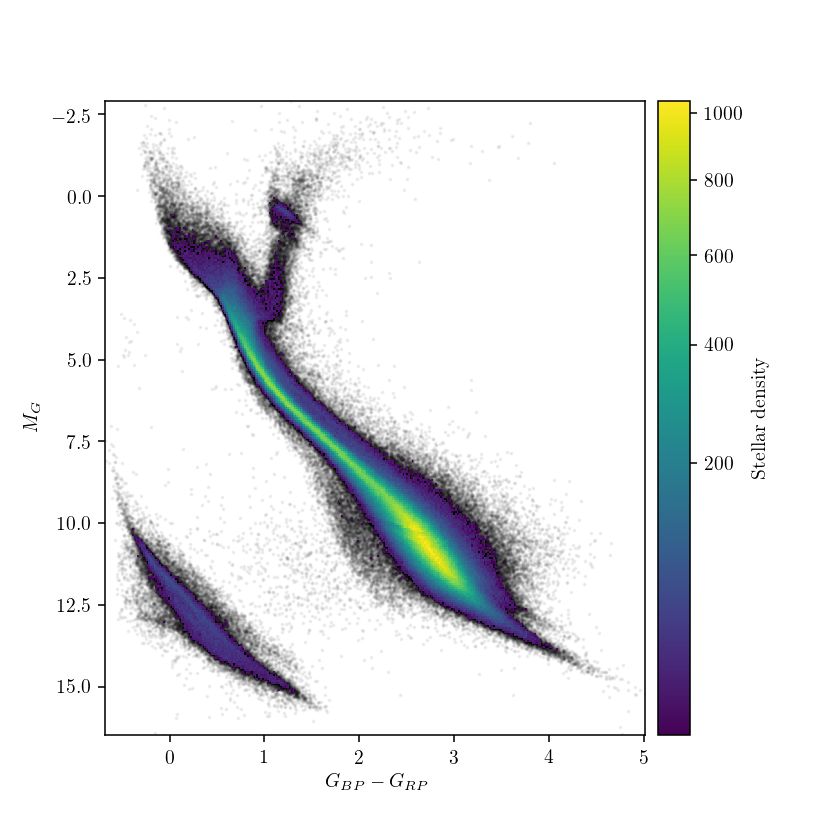Tangled velocity structure in a massive stellar nursery
The figure below is an interactive supplement for my Sokolov et al. (2019) paper, where we used unsupervised hierarchical clustering algorithm to disentangle complex dynamics within a massive molecular cloud.
The figure, made in plotly, is a position-position-velocity diagram of the ammonia-derived kinematics within a massive filamentary infrared dark cloud G035.39-00.33. The velocity components identified with acorns are shown in different colors.
Urban Growth
Gaia H-R diagrams
Querying Gaia data for one million nearby stars

New webpage! What can it do?
Markdown
Posts in Hugo are written in Markdown, and MathJax should be enabled by default, so LaTeX should get rendered:
$$ \ln \mathcal{L}(\theta) = -N \ln \sqrt{2 \pi \sigma^2} - \frac{1}{2\sigma^2} \sum_{i=1}^N \Big(y_i - \mathcal{M}(\theta, i)\Big)^2 , $$
although I can’t get inline math mode to render: $x = \frac{1}{2}$ yet.
Using Font Awesome
Markdown supports html-code blocks, so we can take advantage of the state-of-the-art web-design features.
- Font Awesome provides free, clean, and beautiful icon set
- Even though the icon set is mainly for web-design...
- ... it has some academic icons as well
- and it even supports animated icons!